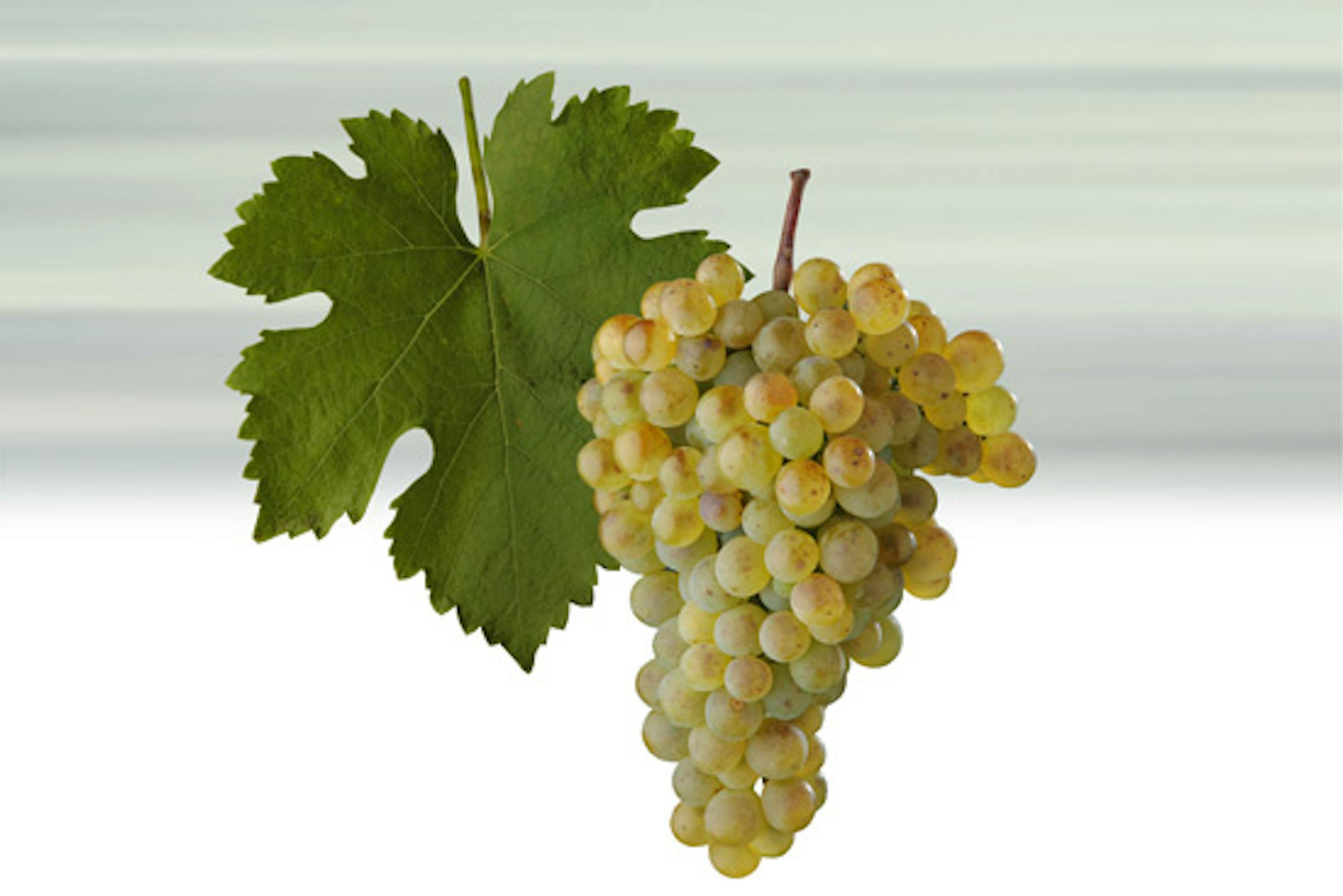Grüner Veltliner
Základní charakteristika vína
Veltlín Green is our most widespread variety and is grown on about 14% of the area of our vineyards. It is definitely worth trying Veltlín wine from the Znojmo, Mikulov or Velkopavlovice regions, and in Bohemia from Mělnicko, Roudnice or Most.
Barva vína
The colour of the wine is usually less pronounced, greenish golden with sparkling reflections.
Vůně vína
The aroma of the wine has tones that may resemble pepper, spiciness, light minerality, but also fruit tones or tones that resemble fresh cut grass or meadow.
Chuť vína
Juicy, fresh, with a strong acidity, pleasant spiciness and a slight hint of bitter almonds in the aftertaste.
Co se k této odrůdu nejvíce hodí?

Profil vína
Interesting wines
About
11% of total vineyard plantings.
Entered in the State Register of Grape Varieties in 1941.
Typical wines from this grape are dry and fruity, sometimes with mineral undertones and an almondy finish.
In all probability this variety emanated from Austria, as evidenced by the once widely used monicker \"Mouhartsrebe\" from the Manhartsberg highlands. The current Austrian name, Grüner Veltliner, came into use during the 18th century. Prior to that it was generally referred to as Grüner Muskateller or Weissgipfler. Even in Moravia, where it is now known as Veltlínské zelené, it used to go under the name of Bělošpičák or Muškatel. One of its parents is more likely than not thought to be Gewurztraminer. This grape variety is also grown in Hungary - Zöldveltelini - and in the Balkans - Veltlinac Zleni.
The vine is of medium to vigorous growth, with the wood maturing well, the foliage is medium dense, leaves medium, five-lobate with deep divisions. The large bunches have small green-to-yellow-green berries that ripen relatively late. Skins are of medium thickness, the pulp is juicy, sometimes even softly muscat-like. Resistance to frost is good, against fungal diseases medium to low. This is a late-ripening variety and for this reason it cries out for good positioning. Most suitable soils are loam and loess.
The wine it produces has a golden-green colour, and when youthful the nose reminds one of pepperiness and sometimes even light cigar aromas. Coming from loamy soils it has a nose of lime flowers, from Palaeozoic soils one of bitter almonds and finally, if it grows on loess, it exudes spiciness. After bottle-ageing the first impression is of heightened spicy peppery tones, which eventually fade and these are crowned in the best of the wines with special attributes by almond-taste nuances underlined by a velvety softness.
After bottle-ageing the first impression is of heightened spicy peppery tones, which eventually fade
Grüner Veltliner makes up 37% of all vines grown in Austria. Originally they were specifically produced as easy-drinking youthful wines for Heurigen, the wine-bars scattered around Vienna. Typical wines from this grape are dry and fruity, sometimes with mineral undertones and an almondy finish.
Grüner Veltliner is also used in cuvées for brand-named wines or as raw material for sparkling wines.
Basic characteristics of quality wines:
Golden-yellow in colour. Wines may contain a lesser or greater range of aromatic substances depending on the soil whence they came. Deep loam means that lime flowers dominate. Palaeozoic gravel gives both a nose and palate of bitter almonds, loess soils give spice going into pepperiness. After bottle-ageing one finds almondy undertones. Wines are medium-bodied and enjoy enormous popularity.



